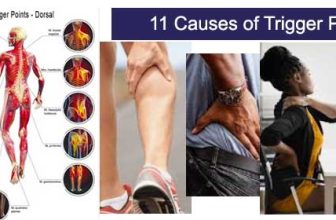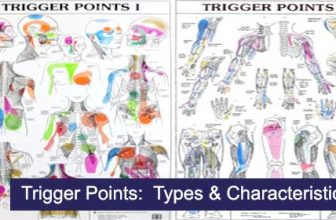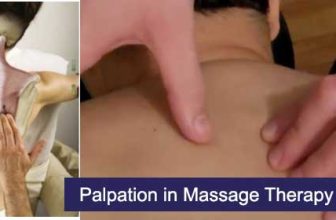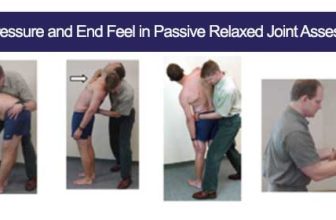
Becoming a Massage Therapist
Are you considering a career in massage therapy? Whether you’re drawn to the idea of helping others feel better physically and emotionally, or you’re simply looking for a fulfilling and rewarding career, massage therapy may be the perfect fit for you. This guide will provide an overview of what to expect when becoming a massage therapist, including information on education and training, certification and licensing, work conditions and more. Whether you’re a beginner or you’re looking to make a career change, this guide will give you the information you need to make an informed decision about starting a career in massage therapy.
What Is Massage Therapy
Massage therapy is a form of healthcare that uses touch to manipulate the soft tissues of the body, such as muscles, tendons, and ligaments. The goal of massage therapy is to help people feel better both physically and emotionally. This can be done by using techniques such as kneading, rubbing, tapping, and vibrations. Massage therapy can be used to treat a wide range of conditions, such as chronic pain, stress, and anxiety.
As a massage therapist, you will be trained to use these techniques to help your clients feel better. You will learn about the anatomy of the body, different types of massage techniques and how to adapt them to specific conditions, as well as how to communicate with clients, create treatment plans and more.
5 Good Reasons For Becoming A Massage Therapist
- Job growth and demand: The demand for massage therapists is expected to grow in the coming years, as more people turn to massage therapy as a form of healthcare. This means that there will be plenty of job opportunities available for massage therapists, and the potential for a stable and rewarding career.
- Versatility: Massage therapy is a versatile field that can be applied to a wide range of conditions and populations. As a massage therapist, you will have the opportunity to work with a diverse group of clients, including athletes, pregnant women, the elderly and more. You will also be able to work in different settings such as clinics, spas, wellness centers, or set up your own private practice.
- Positive impact: Massage therapy has been shown to have numerous benefits for physical and emotional health. As a massage therapist, you will have the opportunity to make a positive impact on people’s lives, helping them to feel better and improve their overall well-being.
- Flexibility: Massage therapy can be practiced in a variety of settings, including spa, clinics, hospitals, and even in the comfort of your own home. This offers flexibility in terms of work schedule and work environment.
- Personal growth: Massage therapy is a field that requires a high level of empathy and sensitivity. As a massage therapist, you will have the opportunity to develop your communication and problem-solving skills, as well as your ability to connect with others. Additionally, you will also be able to improve your own self-awareness and mindfulness.
Massage Therapy Study, Education and Training
Massage therapy programs are typically offered by private massage therapy schools or colleges. The types of programs offered can vary depending on the school or college, but generally, they fall into one of the two following categories:
Advanced Massage Therapy diploma programs: These programs typically take 2 years to complete and provide students with more in-depth knowledge and skills in massage therapy. They include classes in anatomy, physiology, kinesiology, and other health-related subjects, as well as hands-on training in various massage techniques.
Massage Certificate programs: These programs are usually shorter in duration and provide students with the basic knowledge and skills needed to become a body worker. They typically focus on hands-on training, and students will learn various massage techniques such as Swedish massage, deep tissue massage, and sports massage.
It’s important to note that the Massage therapy program type and duration vary depending on the state, province or territory, as well as the specific school or college offering the program. It’s always a good idea to check with the school or college and the Massage therapy regulatory body in the state, province or territory where you plan to practice. This is to ensure that the Massage therapy program you choose meets the necessary requirements and standards in order to get licensed in the state, province or territory you plan to practice Massage therapy.
Certification And Licensing Requirements for Massage Therapists
Massage therapy certification and licensing requirements vary by state, province and territory. Generally, in order to become a massage therapist, you must complete a certain number of hours of training. Additionally, in some states and provinces, you must pass a licensing exam. In some states, provinces and territories, massage therapists must also complete continuing education courses to maintain their license.
In order to practice Massage therapy in most states, provinces, and territories, one must obtain insurance. This insurance typically requires the massage therapist to be a member of a massage certification board, association or college. These boards and associations are responsible for setting the standards for massage therapy, and they provide the necessary certifications and credentials for massage therapists to become insured.
Additionally, they often provide continuing education and other resources to help massage therapists stay up to date on the latest techniques and regulations.
In the Canadian provinces of British Columbia, Ontario, Newfoundland & Labrador, New Brunswick, and Prince Edward Island (PEI), Massage therapy is regulated. In these 5 provinces, the College of Massage Therapists, a government-appointed panel, is responsible for regulating massage therapy and safeguarding the public from potential harm. It verifies the qualifications of its Massage therapist members and enforces regulations such as a code of ethics, standards of practice, and title protection.
Job Description and Duties of Massage Therapists
A massage therapist is a healthcare professional who uses various techniques to manipulate the soft tissues of the body to promote relaxation, reduce pain, and improve overall wellness. Here’s a list of a massage therapist’s typical duties and responsibilities:
-
- Communicating with clients about their medical history and areas of discomfort
- Assessing clients’ needs based on client interview and physical assessment
- Keeping accurate and detailed client records
- Creating personalized massage treatment plans for clients
- Performing massage treatments
- Maintaining a clean and safe massage environment
- Staying up-to-date with industry developments and continuing education opportunities
The role of a massage therapist is to help clients improve their overall well-being, whether that be through helping to reduce stress, manage pain, or recover from an injury. Massage therapists may work side by side with other healthcare professionals such as physiotherapists and chiropractors. They typically work in a variety of settings such as wellness centers, spas, and private practices. They may also work in hospitals, sports clinics, or fitness centers.
Important Tips When Considering Becoming a Massage Therapist
- Research the different types of programs and massage schools available, as well as their accreditation status, before enrolling in any Massage Therapy program.
- Check if the Massage Therapy program is recognized by the regulatory body and professional associations in the province or territory or state where you plan to practice.
- Network with other massage therapists in the field to learn about their job experience and job opportunities.
- Stay informed about the latest trends and developments in massage therapy.
Massage therapy is a fulfilling and rewarding career that can make a positive impact on people’s lives. Massage therapists can work in a variety of settings, including spas, wellness centers, hospitals, sports clinics, fitness centers, or private practice. The demand for massage therapists is expected to grow in the coming years, providing job stability and opportunities. This is due to the increasing acceptance and recognition of massage as a mainstream healthcare option, as well as an increasing awareness of the benefits of massage for stress management and overall wellness. If you choose to pursue a career in massage therapy, you can look forward to a stable and growing job market, with ample opportunities for career growth and advancement.



